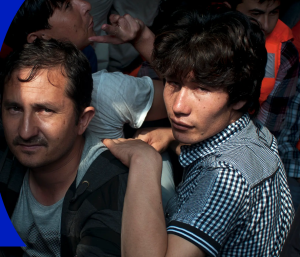Stunning photo essay explores the asylum seeker experience
A stunning new photo exhibition charts the journey of an asylum seeker from Afghanistan over two years and across three continents.
Photojournalist Barat Ali Batoor has recorded his passage to freedom and safety in a life-affirming photo essay called ‘Searching for Sanctuary, a journey of survival’.
The exhibition is both an exploration of the experiences of the much-persecuted Hazara minority and a touchstone for the plight of asylum-seekers across the globe.
Batoor is a double Walkley-Award-winning photographer and reporter whose tale of survival goes beyond the headlines to reveal the personal.
After publishing a piece in the Washington Post exposing the trade of underage prostitution in his homeland of Afghanistan, Batoor became the target of death threats.
 Forced to flee his country, he began a perilous journey of escape – but he never stopped taking photos. From Pakistan and Thailand to Indonesia and Australia, Batoor spent two years capturing the untold stories of what it means to be an asylum seeker.
Forced to flee his country, he began a perilous journey of escape – but he never stopped taking photos. From Pakistan and Thailand to Indonesia and Australia, Batoor spent two years capturing the untold stories of what it means to be an asylum seeker.
His exhibition explores topics of exile. It includes child exploitation, human trafficking, people smuggling, genocide and people speaking about their experiences of exile and discrimination.
“I want to document the untold stories of my people to give voice to the voiceless. To express my feelings, I choose photography as the medium of expression,” Batoor said.
In September 2012, Batoor accompanied a group of asylum seekers on a hazardous and ill-fated boat journey from a remote Indonesian island to Christmas Island.
On the trip the boat started to sink and Batoor and others swam to a nearby island where they were arrested by Indonesian police.
A still image taken by Batoor on the voyage won the 2013 ‘Photo of the Year’ in the prestigious Nikon-Walkley Press Photography awards.
In 2015, Batoor went back to Pakistan to document the stories of the Hazaras who were under constant targeted attacks and bomb blasts in Quetta city. The increased insecurity and marginalisation of the Hazaras forced many of them to leave Pakistan and seek asylum in a third country. Most of them tried to come to Australia by sea.
In his exhibition, Batoor highlights the challenges the Hazara people faced effectively living in a ghetto; he documents their forced migration and the unseen and often perilous journeys taken with people smugglers attempting to reach Australia.
The exhibition also takes viewers on own Batoor’s gripping journey — one that reached a watershed when, in a photo series, he documented the injustice done to the ‘Dancing Boys’ and the practice called ‘Bacha Bazi’ a tradition found across Afghanistan involving the sexual exploitation of boys.
He was forced to flee to find safety, like other journalists and whistle blowers who face threats to their life from exposing the wrongdoings of those in power.
Born in Pakistan, Batoor moved to Afghanistan to work as a photojournalist in 2005. His parents had fled the country in the early 70s because of the discrimination they experienced as Hazaras, an ethnic minority group in Afghanistan that has faced political, economic and social repression for more than a century.
He now works as a Program Co-ordinator with the Asylum Seeker Resource Centre in Melbourne.
Batoor’s poignant, life-affirming documentation of searching for sanctuary and overcoming unthinkable odds is on display at the State Library of Victoria until October 5.
Read more here: RISING: Melbourne 01 — 16 June 2024 — Barat Ali Batoor












